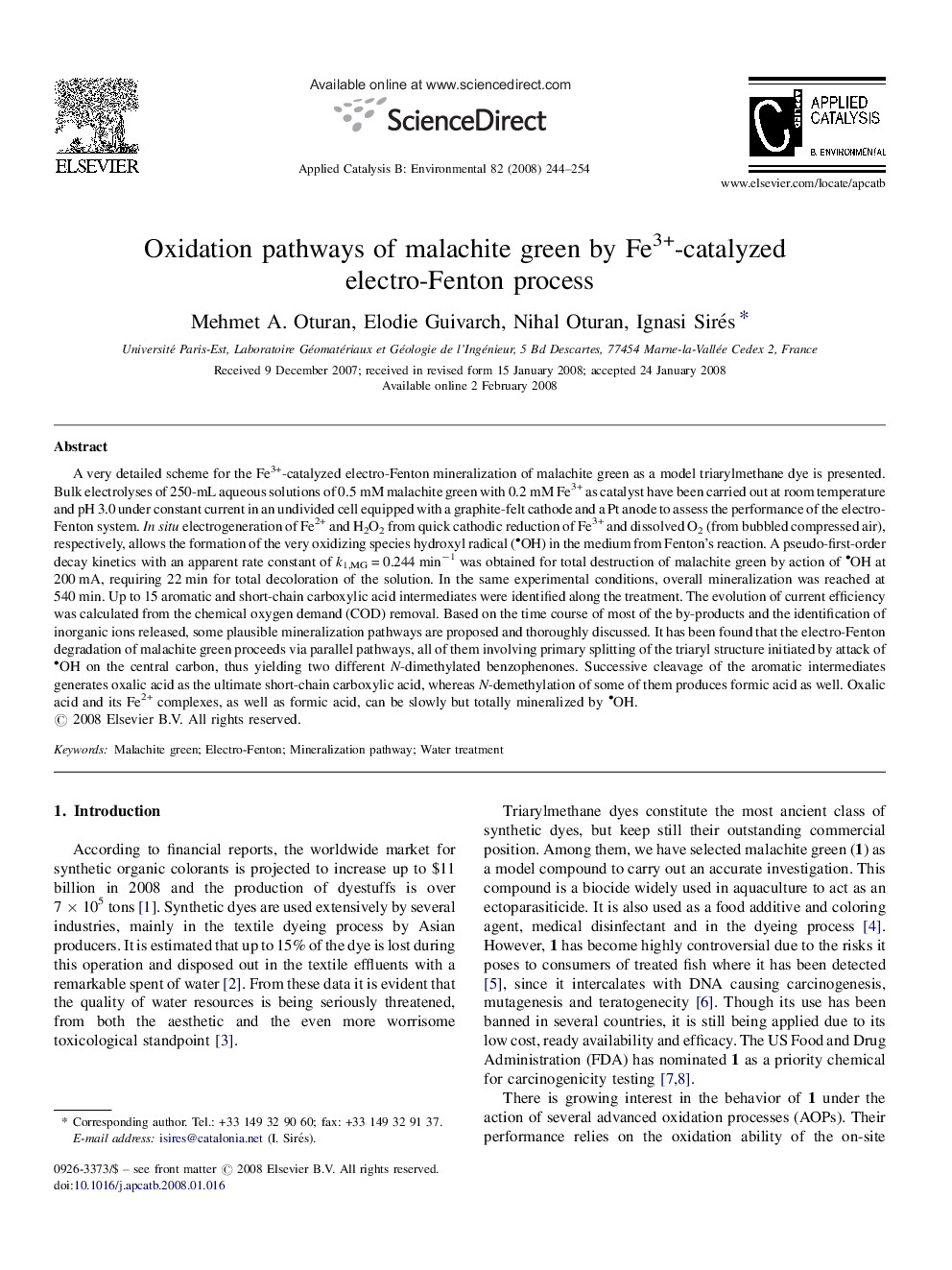| کد مقاله | کد نشریه | سال انتشار | مقاله انگلیسی | نسخه تمام متن |
|---|---|---|---|---|
| 48284 | 46499 | 2008 | 11 صفحه PDF | دانلود رایگان |

A very detailed scheme for the Fe3+-catalyzed electro-Fenton mineralization of malachite green as a model triarylmethane dye is presented. Bulk electrolyses of 250-mL aqueous solutions of 0.5 mM malachite green with 0.2 mM Fe3+ as catalyst have been carried out at room temperature and pH 3.0 under constant current in an undivided cell equipped with a graphite-felt cathode and a Pt anode to assess the performance of the electro-Fenton system. In situ electrogeneration of Fe2+ and H2O2 from quick cathodic reduction of Fe3+ and dissolved O2 (from bubbled compressed air), respectively, allows the formation of the very oxidizing species hydroxyl radical (OH) in the medium from Fenton's reaction. A pseudo-first-order decay kinetics with an apparent rate constant of k1,MG = 0.244 min−1 was obtained for total destruction of malachite green by action of OH at 200 mA, requiring 22 min for total decoloration of the solution. In the same experimental conditions, overall mineralization was reached at 540 min. Up to 15 aromatic and short-chain carboxylic acid intermediates were identified along the treatment. The evolution of current efficiency was calculated from the chemical oxygen demand (COD) removal. Based on the time course of most of the by-products and the identification of inorganic ions released, some plausible mineralization pathways are proposed and thoroughly discussed. It has been found that the electro-Fenton degradation of malachite green proceeds via parallel pathways, all of them involving primary splitting of the triaryl structure initiated by attack of OH on the central carbon, thus yielding two different N-dimethylated benzophenones. Successive cleavage of the aromatic intermediates generates oxalic acid as the ultimate short-chain carboxylic acid, whereas N-demethylation of some of them produces formic acid as well. Oxalic acid and its Fe2+ complexes, as well as formic acid, can be slowly but totally mineralized by OH.
Journal: Applied Catalysis B: Environmental - Volume 82, Issues 3–4, 8 August 2008, Pages 244–254